Last Updated on September 5, 2023 by Grant
Visiting Minidoka National Historic Site is hard on the emotions.
This site in southern Idaho preserves the remains of a concentration camp for Japanese Americans during World War II. From 1942 to 1945, this site incarcerated more than 13,000 people, mostly American citizens.
Walking the grounds and seeing the conditions these folks were forced into is simply heartbreaking. Minidoka National Historic Site is located in the midst of the desert of the Magic Valley of southern Idaho. When the incarcerated Japanese Americans arrived, they found sagebrush and desert as far as they could see other than the hastily assembled barracks buildings. The wind blew dust everywhere. The summer heat was brutal. The winters were bitter. When it rained, the whole area flooded. Oh, and the buildings weren’t finished yet. The incarcerated had to work to finish the plumbing of their barracks buildings when they arrived.
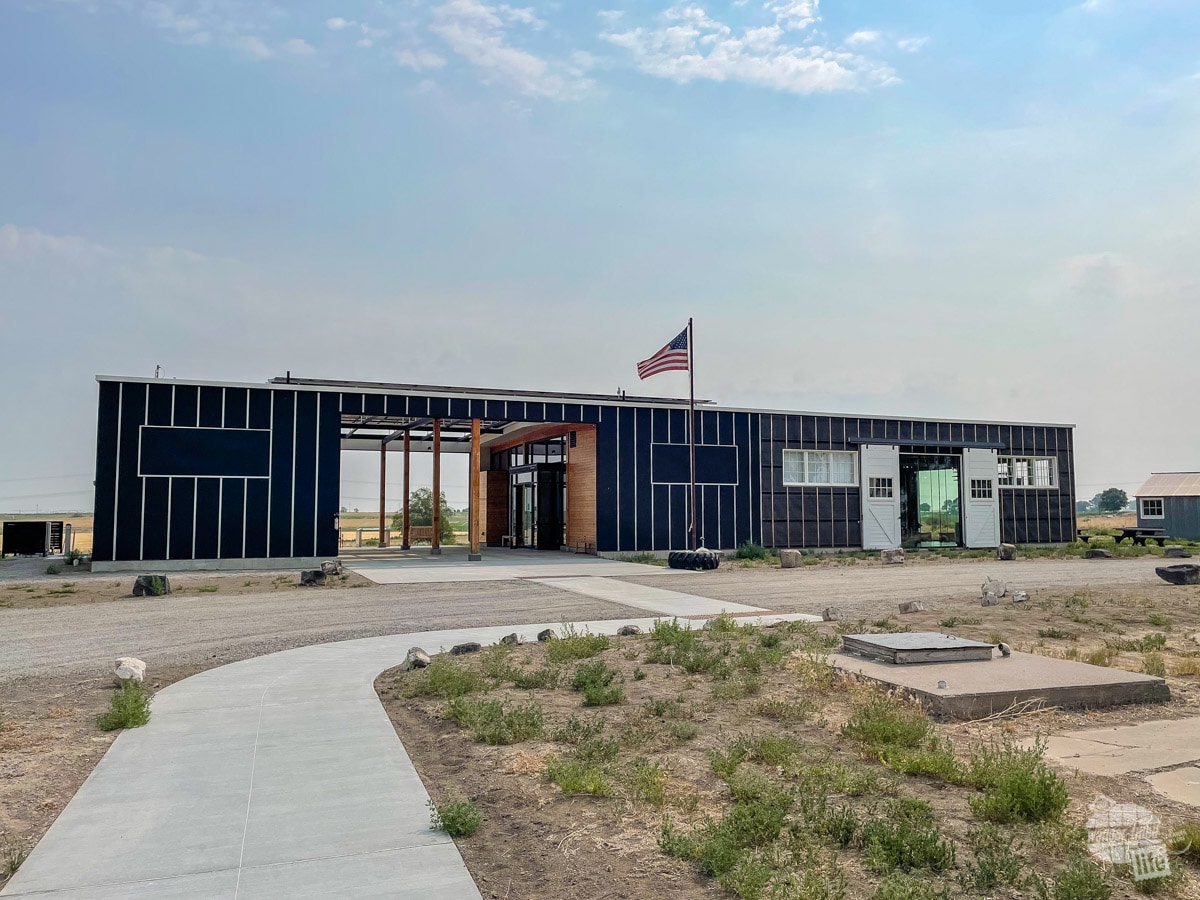
Still, they made the best of their lives and make this concentration camp some semblance of a home. And yes, that’s what they call it. And they call themselves “incarcerees.” For them, all the platitudes do not negate the fact there were armed guards who told them they would be shot if they tried to escape.
“I was born in an American concentration camp. I have been able to do things with my life because of the strength of my parents and their values.”
(Disclaimer: When we link to places where you can buy our stuff or places we stayed, we are using special codes that earn us commissions on the sales at no additional cost to you. Please see our Review Policy for more information.)
Start at the Visitor Center
When we first visited this site back in December 2015, there wasn’t much here. Indeed, the visitor center was just part of the Hagerman Fossil Beds National Monument and did little to truly tell this story.
Since then, the Park Service has constructed an excellent visitor center with comprehensive exhibits. I think my favorite aspect of this visitor center is its construction. The Park Service modeled it to resemble the barracks buildings of the camp.
“The government called it an evacuation. It wasn’t an evacuation, it was a forced removal.”
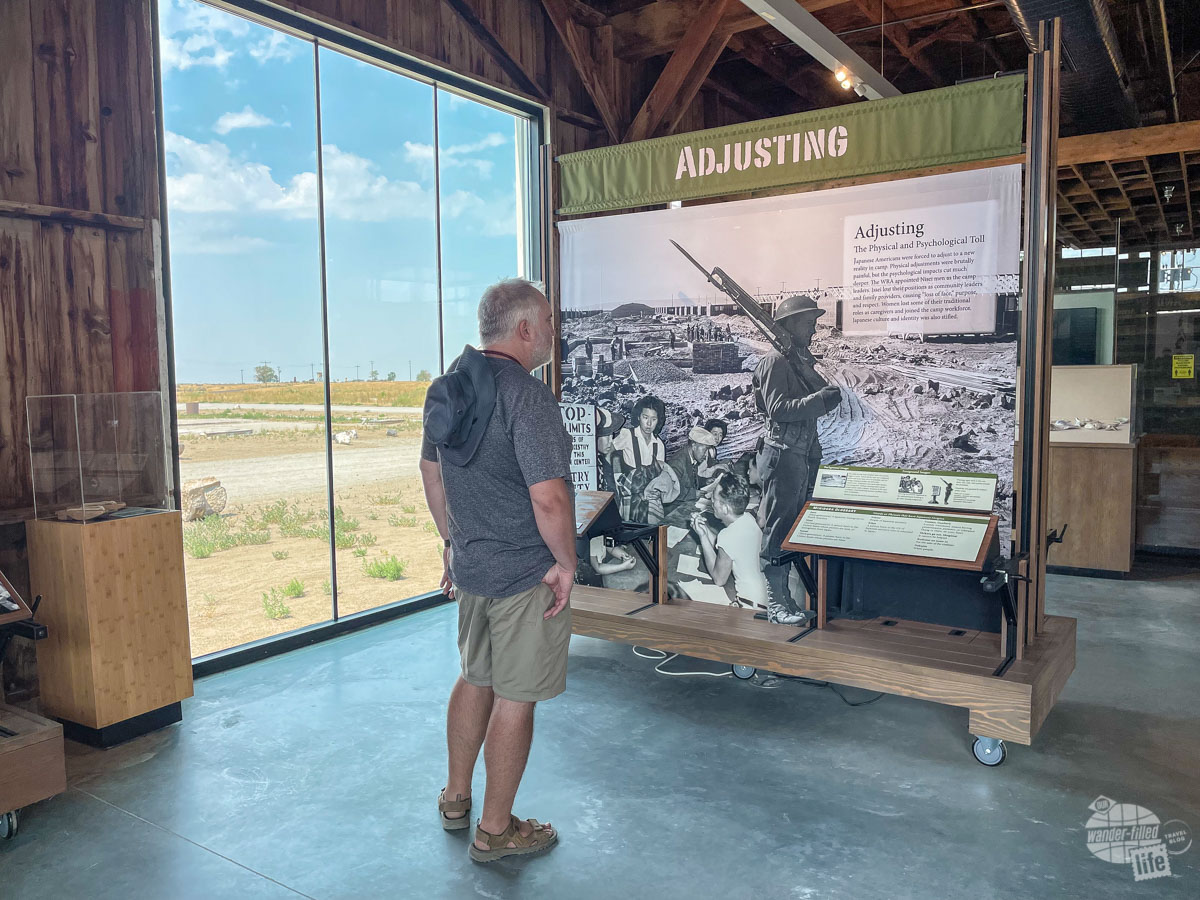
Inside, you will find a comprehensive exhibit on the forces that pushed the Japanese Americans into the 10 concentration camps scattered throughout the country. Reading about how these American citizens were taken from their homes with only what they could carry was gut-wrenching.
The exhibits tell the story of life in the camp and the impact on the families. Just as heart-wrenching is how the incarcerees were released. The government gave them $25 per person and a bus ticket to wherever they had lived before.
“It was like a rape, a rape of a community… within the community, there was a sense that we could be taken again. So, do not call attention to ourselves.”
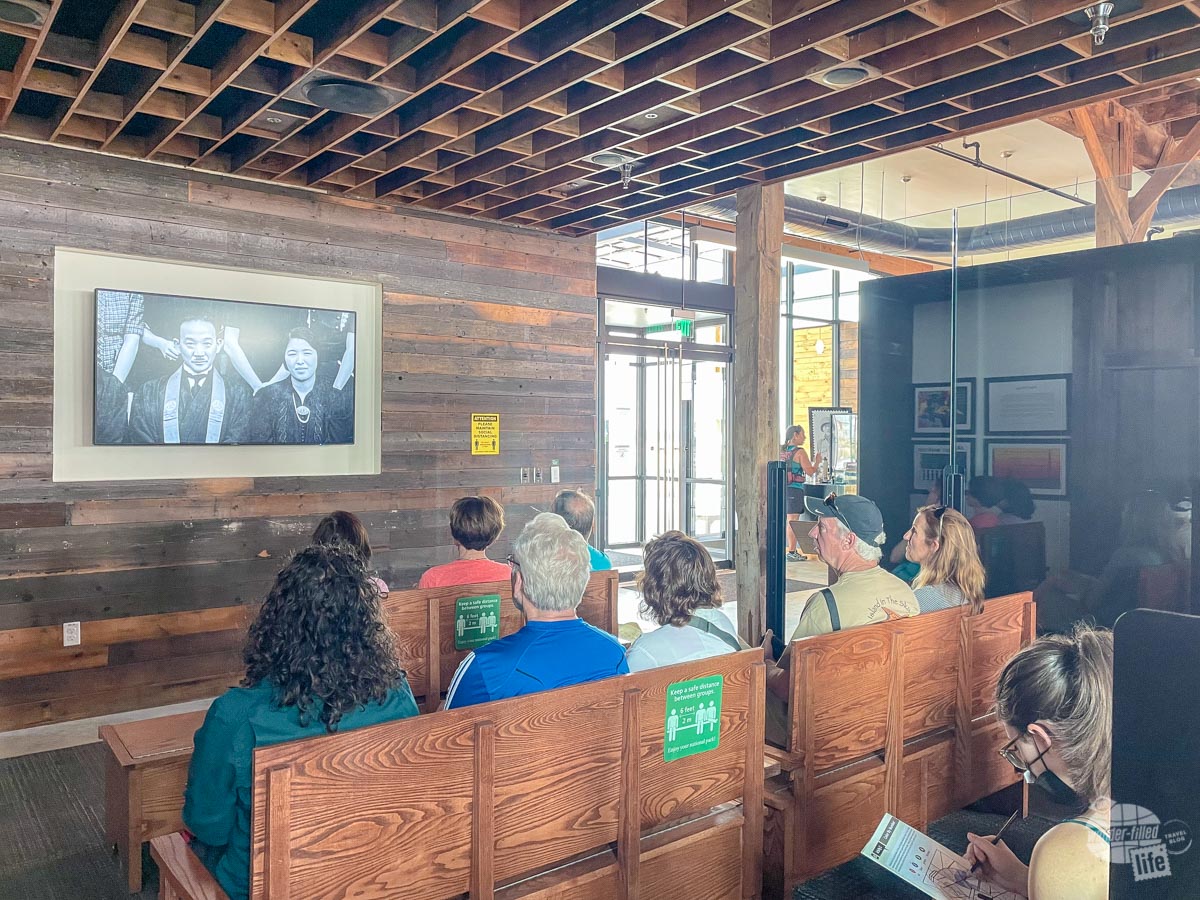
Once you have finished with the exhibits, watch the excellent park film, narrated by George Takei who was incarcerated as a child at Tule Lake in California. It takes 30 minutes but you can read all of the exhibits and still not have near the understanding of what these folks went through as watching the pain in their eyes. The quotes I have included in this post come from that film. I felt their words did a far better job than mine to explain the pain and suffering these people went through.
Take a Tour
We made a point to schedule our visit so we could take the guided tour, which was led by a volunteer who grew up just down the road from Hunt Camp, as the facility was known at the time.
This tour took us through the partially restored barracks building, mess hall and root cellar. We were able to see exactly how cramped the living conditions were, how little privacy they had and how poorly constructed the buildings were in terms of fending off the elements.
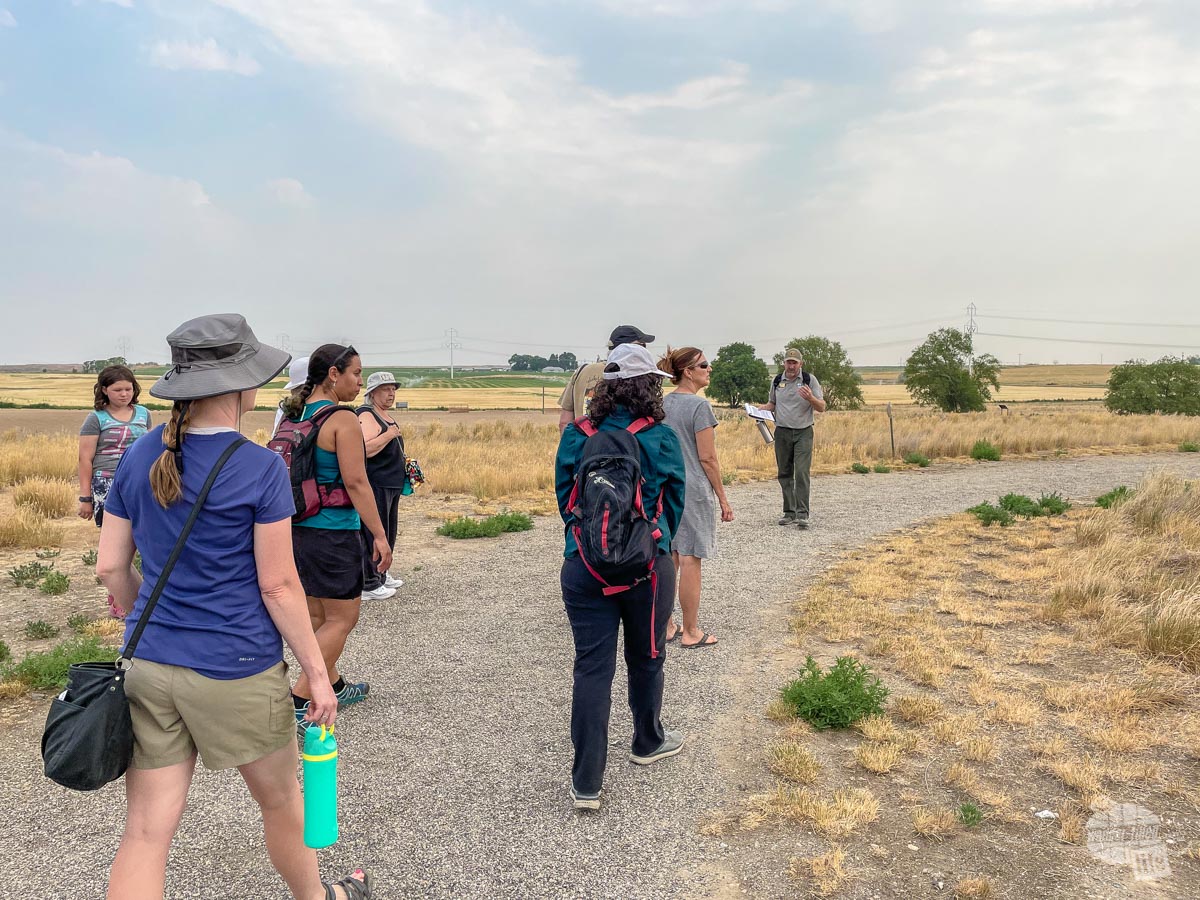
The exhibits in the mess hall and nearby baseball field show exactly how much the incarcerees tried to make this place some semblance of home, especially for their children.
After the tour, we walked out to the fire station, the reconstructed guard tower and honor roll sign.
One of the most painful aspects of this incarceration for me was the draft of incarcerees. While many volunteered to serve in the 442nd Infantry Regiment, a segregated, all-Japanese American combat unit that served in Europe, many were conscripted into service.
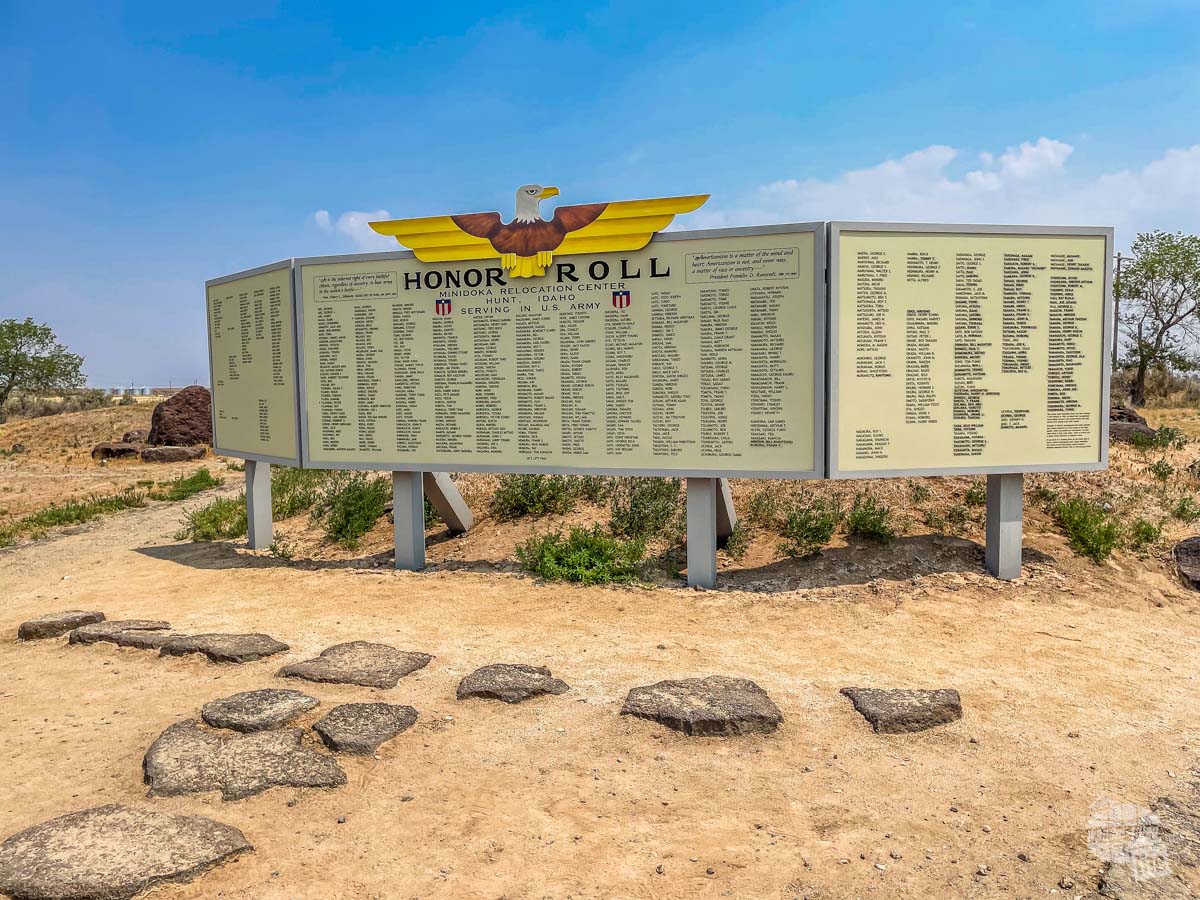
For many, it was an opportunity to prove their loyalty to their country. For some, they resented being incarcerated and then drafted to fight.
“The young man who was in our block, he refused to fight in the Army. He said, ‘No, you take us out of our prison here at Minidoka and then I’ll go and serve.’”
Those who refused to serve or answered “no” on the loyalty questionnaire were sent to the maximum-security camp at Tule Lake.
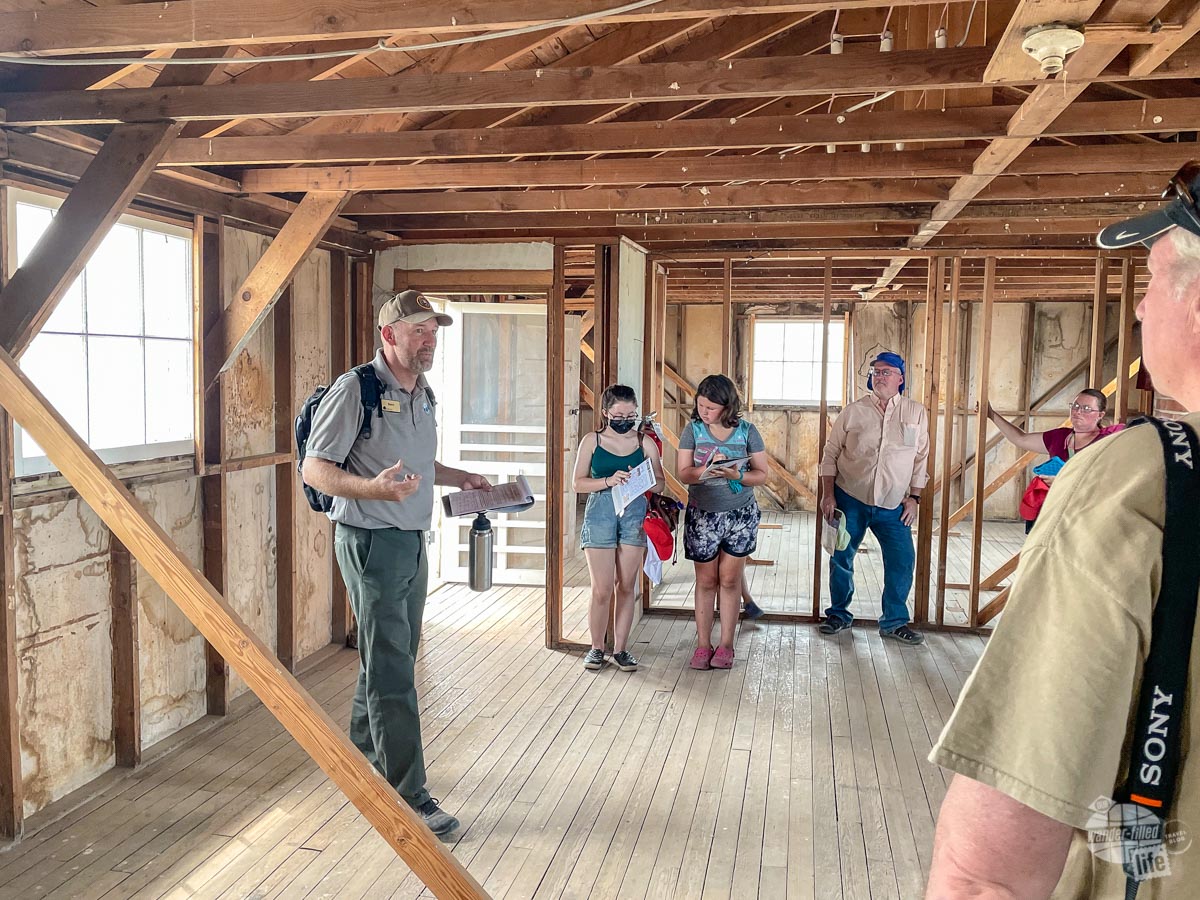
Final Thoughts on Visiting Minidoka National Historic Site
You can easily visit Minidoka as a stop along the way when passing through southern Idaho on I-84. It is not far from Twin Falls.
That said, bring what you need with you. There are no services for several miles. I would plan on spending at least an hour, two if you plan on taking the tour.
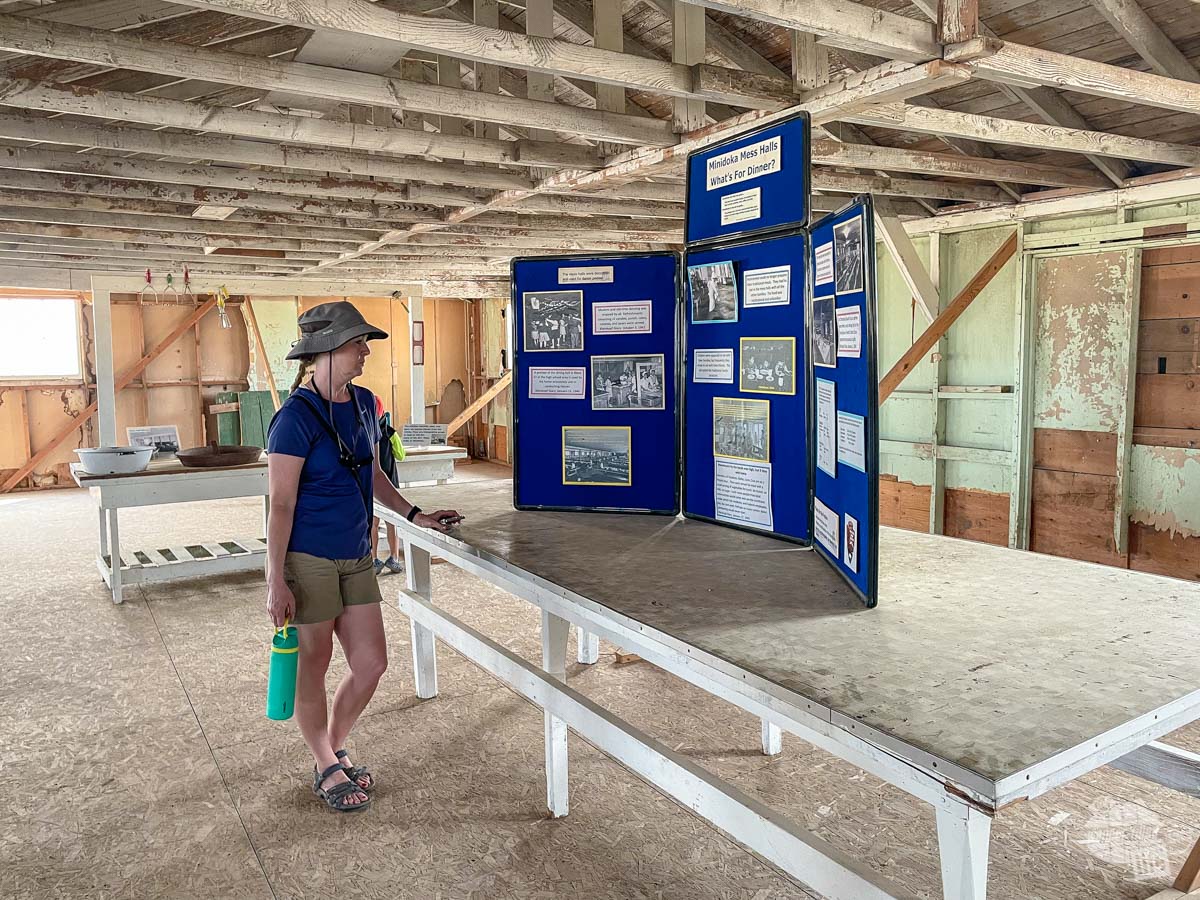
If you do take the tour, be sure to bring a hat, etc. There is no shade along the walking path.
When you go, expect to have your understanding of what actually happened at these concentration camps challenged. This is one of two camps we have visited (the other is Heart Mountain near Cody, WY) and the experience was profound. It was definitely not what I learned in history class growing up.
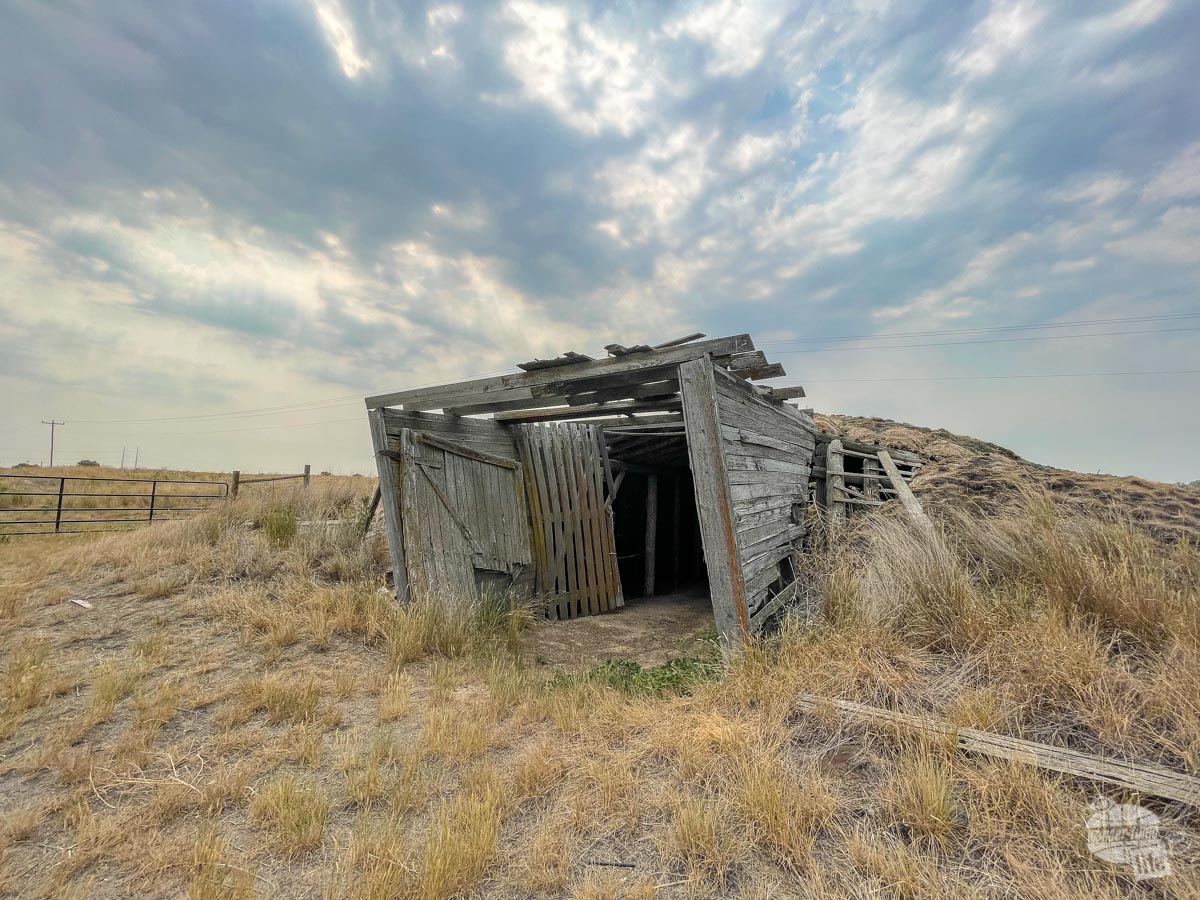
Some will argue these weren’t concentration camps and should not be compared to the camps run by the Nazis. We have been to Auschwitz. We have seen those camps. While the two are not the same, you can definitely feel the similarities as soon as you see the guard towers. When I left both of these places, I was angry. I was angry that anyone could stand by and say this was ok.
To be honest, as uncomfortable as sites like Minidoka are, we love experiencing places like this. It is exploring these overlooked corners of this country and learning about the stuff that was glossed over in history class that helps us feel a closer connection to who we are as a nation.
“Now, that I have told you my story, you have a piece of that legacy, to stand up, you have a piece. And should it happen again, you cannot claim ignorance. You can either say, ‘Yeah, I’m for that.’ or ‘No, I’m not.’ And I am hoping reason will rule and they will see that injustices hurt us all.”
Travel Resources
What do you use to find a flight?
We use Skyscanner to find deals on flights. Skyscanner has a great interface and compares tons of airlines for the best pricing and routing. That said, it does not always have every airline and some airlines will have better deals on their website. Still, Skyscanner is a great place to start.
Click here to search for a flight.
What do you use to find a hotel?
We typically stay at Hilton properties, so we use the Hilton website. You can find good Hilton Honors discounts or AAA discounts for a hotel there. We make great use of our free night certificates from our Hilton Honors American Express.
Click here to book a Hilton property.
If there are no Hilton properties available, we use TripAdvisor to read reviews and book the hotel. We find we can get the best price that way.
Click here to search for a hotel.
We recently partnered with Stay22 to add interactive maps to each of our destination posts. This will allow you to see a plethora of hotels and vacation rentals all in one responsive map of the area.
What if I need more space than I can get at a hotel?
We use Vrbo for the times when we have rented a cabin for a weekend getaway, like this cabin in Townsend, TN, or needed to rent a house for a large family vacation. We had a great experience with them in terms of refunding deposits when COVID hit and will continue to use them.
Click here to search for a vacation rental.
Who do you use for rental cars?
As a general rule, we book with Hertz for rental cars. We have had nothing but good experiences with them. Plus, we really like unlimited mileage and not worrying about crossing state lines. We have even rented from Hertz overseas in both Slovenia and Croatia.
Click here to book a rental car.
How about booking a cruise?
We have found some amazing prices for booking a cruise through Cruise Direct. We have saved a lot of money on our cruises compared to what we found elsewhere, making a last-minute Bahamas cruise even cheaper.
Click here to book a cruise.
What if I want to rent an RV?
We highly recommend Outdoorsy for RV rentals. We rented a camper van for a week to visit Rocky Mountain National Park for the elk rut and Custer State Park for the Buffalo Round-Up and had a blast. The program was easy to use and we really enjoyed the freedom of having a camper van for that trip.
Click here to rent an RV.
What do you use for booking tours?
We don’t often book tours. Typically, we like to do stuff on our own. That said, there are some experiences you can’t have any other way. So, when we do want to book a tour, we always check Viator first.
Click here to book a tour.
Do you use anything to get discounts on the road?
We make extensive use of both Good Sam and AAA on the road. Good Sam is normally regarded as a discount card for RVers at campgrounds and Camping World but anyone can use the 5 cents off a gallon at the pump at both Pilot and Flying J.
Click here to get a Good Sam membership.
We have had AAA as long as we have been married and it has more than paid for itself in discounts at hotels, aside from the peace of mind of having roadside assistance. Add in paper maps and the ability to get an international driver’s license and it is more than worth it for any traveler out there.
Click here to get a AAA membership.
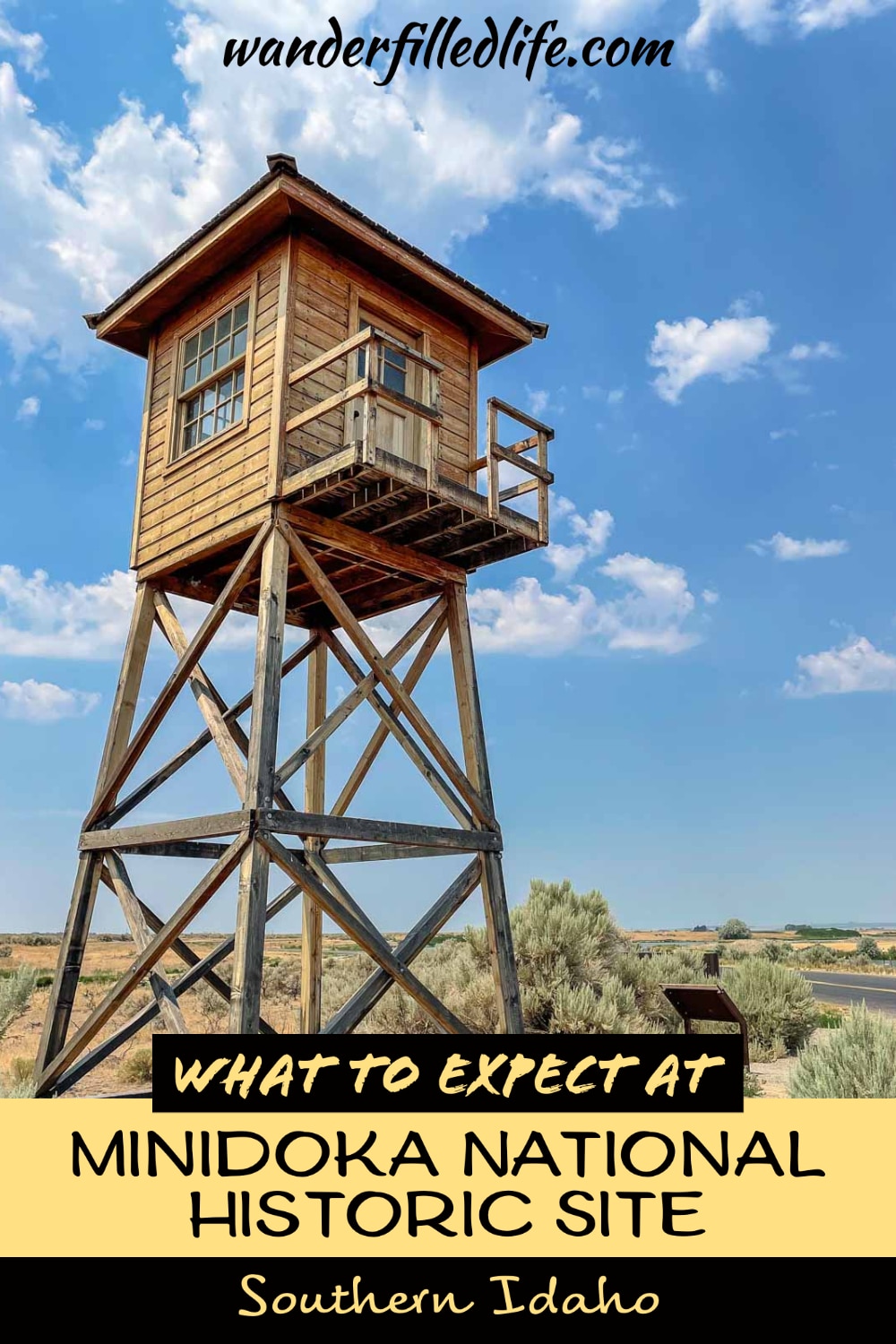

Thank you for sharing, Grant. The Minidoka article was of particular interest to me because I am of Japanese ancestry and live just a few miles from Pearl Harbor. I was born after the war, but I do recall my parents saying that soldiers went door-to-door confiscating items from Japanese homes. A radio was confiscated from their home because the soldiers thought it might be used to communicate with Japan. Fortunately, they were not incarcerated, but prominent members of the Japanese community were sent to Honouliuli Internment Camp here on Oahu. I visited the Japanese American Exclusion Memorial on Bainbridge Island in Washington state (short ferry ride from Seattle) and it was very emotional. Quotes from internees like the ones you shared brought me to tears. “I felt like a second-class citizen, to be herded onto the boat by soldiers with bayonets. It was…the most humiliating experience of my life.” If I’m not mistaken, the memorial is part of the Minidoka National Historic Site. Thank you again for sharing. I will add Minidoka to my travel wish list.
Corinne,
Thanks so much for your comments. This is the second internment camp we have visited (the other is Heart Mountain in Wyoming) and it just makes me so angry. One of the things that was made apparent in the exhibits is that the government knew it was a waste of time but did it anyway out of fear and racism.
I am afraid things like this are slowly falling out of our consciousness as a country. I am glad sites like this exist to tell these stories.